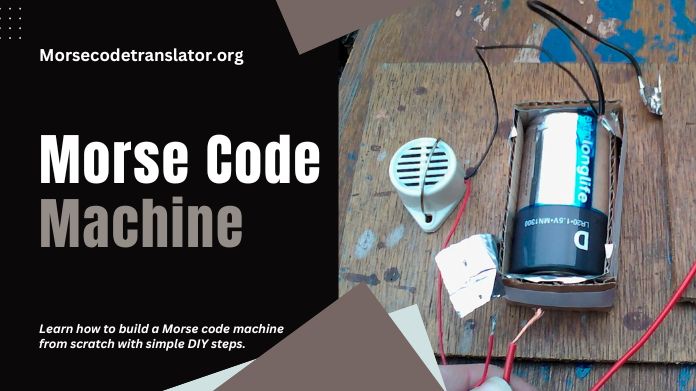Morse code, with its rich history and timeless significance, intrigues enthusiasts with its simplicity and effectiveness as a means of communication. While modern technology has rendered traditional Morse code machines obsolete, crafting one’s own Morse code device remains irresistible to those fascinated by this iconic communication method.
In this article, we embark on a journey into Morse code, exploring the fascinating process of creating a Morse code machine from scratch. Whether you’re a hobbyist seeking a hands-on project or an aspiring Morse code enthusiast eager to delve deeper into communication, building your own Morse code machine offers a rewarding and educational experience.
Join us as we uncover the steps and techniques of constructing a Morse code machine using readily available materials and essential electronic components. From understanding the principles of Morse code transmission to assembling the necessary elements, this guide will equip you with the knowledge and skills to embark on your own Morse code adventure.
Let’s dive into the world of Morse code and discover the joy of creating your communication device from the ground up.
What is Morse Code Machine?
A Morse code machine, a telegraph or telegraph key, is a device that transmits messages in Morse code. It typically consists of a key or switch pressed to create short and long electrical signals, representing dots and dashes. These signals are then sent through a telegraph wire or radio transmitter to convey messages over a distance.
In its simplest form, a Morse code machine may consist of just a key and a sounder, which produces audible clicks corresponding to the dots and dashes of Morse code. More complex telegraph machines may include additional features such as a sounder for receiving messages, a mechanism for recording messages on paper (a telegraph register), or a visual indicator such as a lamp or LED.
Morse code machines were crucial in long-distance communication before modern telecommunications technologies. While they are no longer widely used for practical purposes, Morse code machines remain a symbol of communication innovation. They are still enjoyed by hobbyists and enthusiasts interested in the history and art of Morse code.
How to Make a Morse Code Machine?

Making a Morse code machine can be a rewarding project for enthusiasts interested in communication technology and electronics. Here’s an essential guide on how to create a simple Morse code machine:
Gather Materials:
- A momentary switch or button (to act as the Morse code key)
- A small buzzer or speaker (for generating Morse code tones)
- A battery or power source
- Connecting wires
- Optional: a breadboard or prototyping board for easier circuit assembly
Circuit Design:
- Connect one terminal of the buzzer/speaker to one terminal of the battery/power source.
- Connect the other terminal of the buzzer/speaker to one terminal of the momentary switch/button.
- Connect the other terminal of the momentary switch/button to the remaining terminal of the battery/power source.
- Optionally, you can use a resistor in series with the buzzer/speaker to limit the current and protect the components.
Assembly:
- If using a breadboard or prototyping board, insert the components and connect them according to the circuit design.
- Ensure all connections are secure and there are no loose wires or short circuits.
Testing:
- Press the momentary switch/button to test the Morse code machine.
- You should hear a sound from the buzzer/speaker whenever the switch/button is pressed.
- To create dots and dashes, practice sending Morse code by pressing and releasing the switch/button in short and long intervals.
Experimentation:
- Once the primary Morse code machine is functional, you can experiment with additional features, such as adding an LED indicator or using different components to modify the sound output.
Following these steps, you can create a simple Morse code machine to practice sending and receiving Morse code messages. Experimenting with different components and configurations can further enhance your understanding of Morse code and electronics.
Final Note
Creating your own Morse code machine is a fun and educational project and a gateway to exploring the rich history and enduring legacy of Morse code communication. By following the steps outlined in this guide, you can embark on a journey of discovery into the world of electronics and communication technology.
Building a Morse code machine offers a hands-on opportunity to learn about circuitry, electronic components, and the principles of Morse code transmission. Whether you’re a hobbyist, a student, or simply curious about the mechanics of communication, this DIY project provides a tangible way to engage with an iconic method of conveying information over long distances.
As you experiment with your Morse code machine and hone your skills in sending and receiving Morse code messages, you’ll gain a deeper appreciation for the ingenuity and innovation behind this timeless form of communication.
So, roll up your sleeves, gather your materials, and embark on the rewarding journey of making your own Morse code machine.
